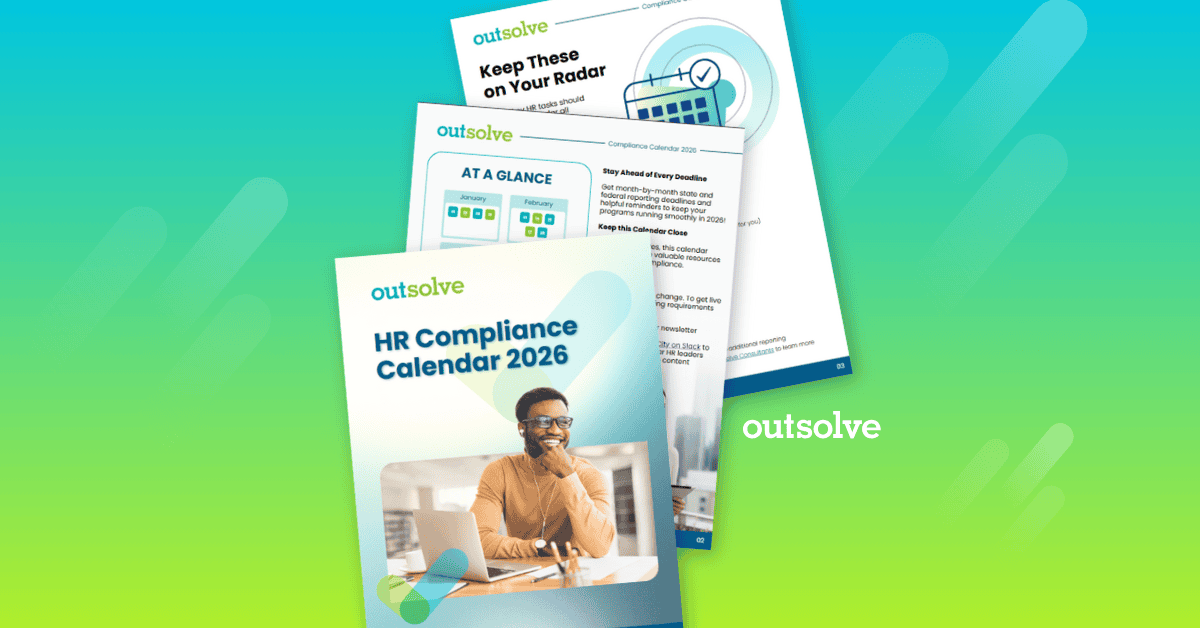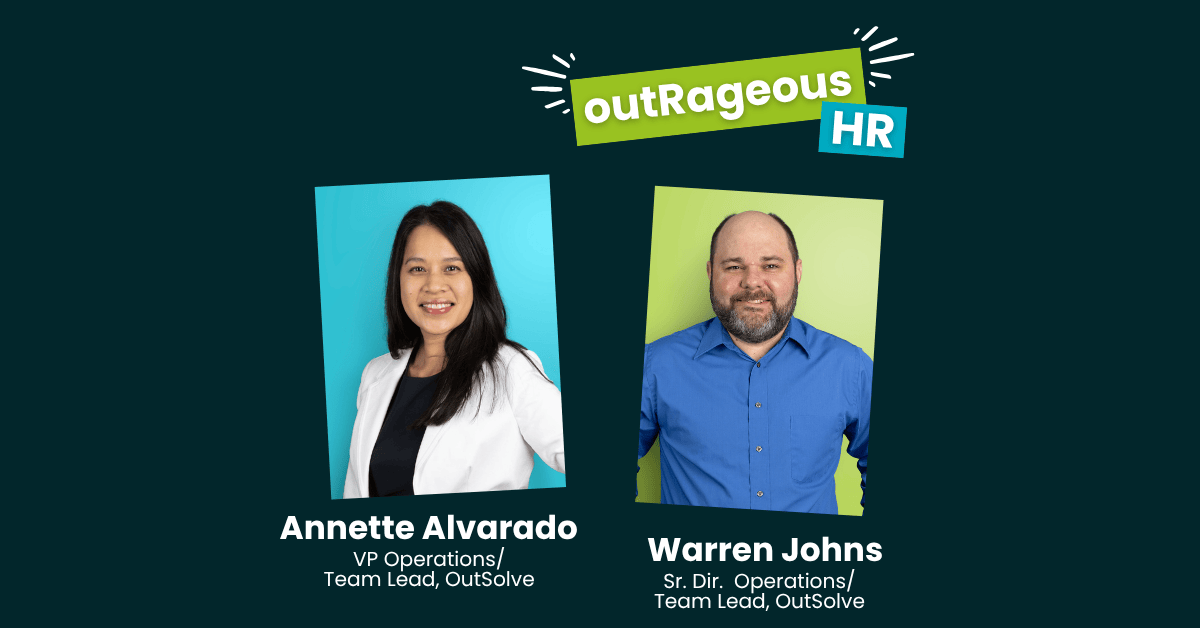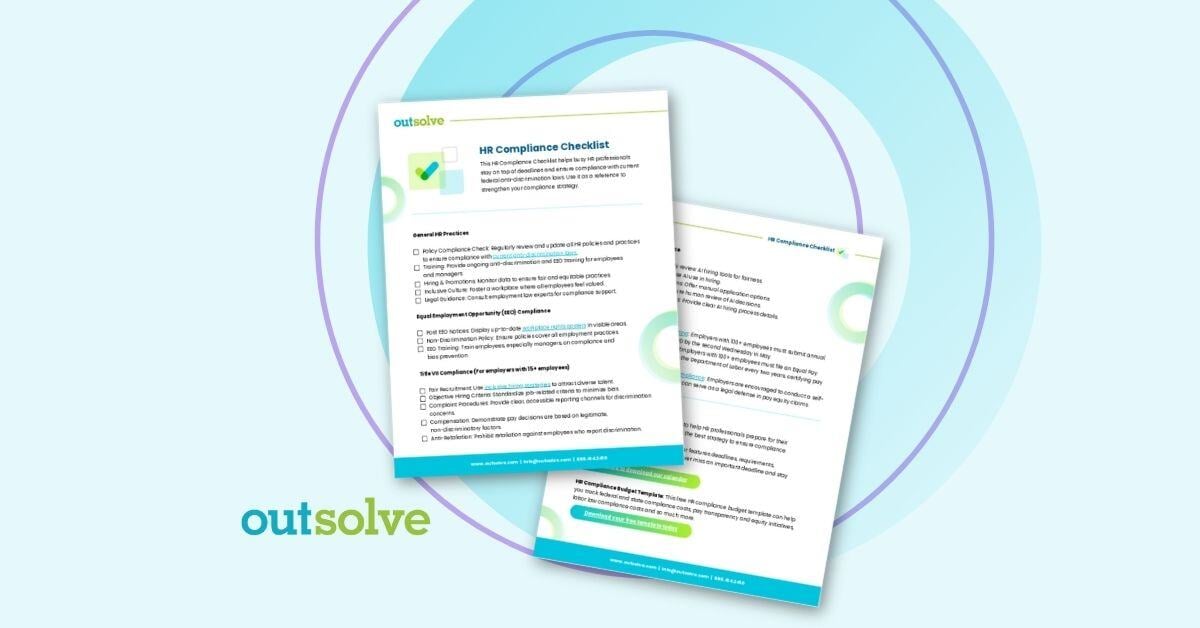5 min read
Common I-9 Errors and How to Correct Them
 Desiree Throckmorton, SPHR
:
Aug 18, 2025 3:35:11 PM
Desiree Throckmorton, SPHR
:
Aug 18, 2025 3:35:11 PM

If you’ve worked in Human Resources long enough, then chances are you’ve had at least one moment of panic over Form I-9! Whether it was an incomplete form, a mismatched document number, or a reverification oversight, I-9 errors are surprisingly common, but potentially costly.
The good news? Most Form I-9 mistakes are correctable if addressed quickly and properly. Even better, with the right tools and training, common errors can be prevented altogether.
Let’s get into more specifics and how trusted partners like OutSolve can help. Here are three key takeaways you’ll learn in this article:
- A refresher on Form I-9
- An overview on some of the more common Form I-9 errors and how to correct them
- Pros and cons of self-auditing
Why I-9 Errors Matter
First, let’s take a step back. As a reminder, Form I-9 is required by the U.S. Citizenship and Immigration Services (USCIS) to verify an employee’s identity and authorization to work in the United States. Both employees and employers have responsibilities in the completion process. The employee completes Section 1 on or before the first day of employment, and the employer completes Section 2 within three business days of the hire date.
The bottom line is that Form I-9 errors can lead to serious consequences. Civil fines for paperwork violations can range from hundreds to thousands of dollars per form, and issues uncovered during an U.S. Immigrations Customs and Enforcement agency (ICE) inspection can result in reputational damage and increased scrutiny. What’s worse is that even seemingly minor administrative errors can be cited as substantive violations.
Whether you're a startup hiring your fifth employee or a Fortune 500 company with thousands on your payroll, no organization is exempt from Form I-9 challenges. Let’s dig into common errors and how you can correct them.
Common I-9 Errors and Real-World Examples
Section 1: Employee Section
This is where the employee inputs their personal information and attests, under penalty of perjury, to their authorization to work in the U.S. Here are some common errors that employees can make and if overlooked by you as an employer, can cost you:
- Missing Signature or Date: An employee might forget to sign or date the form. The time frame for completion of Section 1 is non-negotiable: as mentioned it must be done on or before their first day of employment.
- Incomplete Fields: It’s easy for employees to mistakenly skip selecting the appropriate citizenship status, not including an expiration date of their employment authorization or making typos in the date of birth field.
- Using Prefilled Forms: Employers sometimes send pre-filled forms to “save time,” however remember that Section 1 can only be completed by the employee. As an employer, you should not pre-fill any information in Section 1 of Form I-9.
Section 2: Employer Section
This is your territory as an employer. It includes examining documents and verifying that they appear genuine and relate to the employee. Common errors include:
- Document Information Typos: Incorrectly documenting the document information can easily happen if employer representatives are rushed or do not realize the importance of accuracy on Form I-9.
- Collecting too many documents: This happens when employers accept List A (documents which establish identity and work authorization), List B (documents that establish identity), and List C (documents that establish work authorization) documents. You only need one from List A or one from List B and C. Also, employers may not direct employees regarding which documents to provide.
- Missing Document Numbers or Issuing Authority: These are critical fields and often overlooked.
- Late Completion: Employers must complete Section 2 and verify documents within three business days of the employee's start date. This timeframe is non-negotiable. Any delays are considered a compliance violation.
Supplement B (formerly Section 3): Reverification and Rehires
This section is used for updating or reverifying an employee’s work authorization or rehiring someone within three years of their original start date. Some common mistakes include:
- Incomplete Reverification: Failing to enter new document details when an employee’s work authorization expires.
- Failure to Reverify at All: If you’re not tracking expiration dates, this step can easily be missed. It’s easy to get this wrong and very important to get it right because the penalty for employing unauthorized employees is very costly.
- Reverifying employees who don’t require reverification: It’s tricky to determine which employees must be reverified.
How to Fix I-9 Errors
So, you’ve spotted a mistake. What now?
Correcting Form I-9 errors is entirely possible, but it must be done in a way that’s transparent, timely, and compliant with the USCIS. If you are ever audited, ICE will see your Form I-9 corrections as making a good faith effort to stay compliant. They prefer to have employers own up to their mistakes and take corrective steps.
Here’s how to correct common I-9 mistakes:
- Don’t Use White-Out or Obscure Original Entries
The golden rule of compliance is never making it look like you’re hiding something. Always strike through incorrect information with a single line. - Initial and Date All Corrections
Whoever makes the correction should write their initials and the current date next to the change. - Use a Memo for Complex Fixes
If the mistake requires more explanation (e.g., Section 2 was completed late), attach a brief memo explaining what happened and how it’s been addressed. - Never Backdate
This is a big one. Always use the current date when making corrections and be honest about the timing should Form I-9 be completed late. - Corrections to Section 1
Employers cannot edit/correct Section 1, therefore employees must be contacted to remedy errors made in Section 1.
For detailed guidance on correcting I-9 errors, check out the USCIS guide on correcting I-9s.
The Risk of Self-Auditing Without Help
Let’s say your team decides to conduct an internal I-9 audit. Great initiative! But the reality is that without proper training, these audits can create more risk than they solve. There is the potential to make unintentional corrections that violate guidelines or miss critical patterns of noncompliance.
The truth is, self-auditing requires expertise, and that’s where external support becomes invaluable. Before diving into an audit, download our free I-9 Audit Checklist to get a sense of what to look for and where to start.
How OutSolve Helps
OutSolve specializes in making I-9 compliance simpler and more integrated into your day-to-day HR processes. Here’s how we can support your team:
- Proactive Compliance Monitoring: Our tools flag potential issues in real-time, before they become formal violations. You get alerts, not surprises.
- Audit-Ready, Secure Digital Storage: Don’t worry about keeping filing cabinets. We offer secure, cloud-based storage that’s easy to access, organize, and share during audits.
- Expert-Led I-9 Support: Should any I-9 issues arise, your dedicated I-9 team will alert you and advise of corrections immediately, giving you guidance through every step of your Form I-9 journey.
- Seamless Onboarding and E-Verify Integration: We integrate with existing HRIS, ATS, and onboarding systems and assist with E-Verify, making Form I-9 a natural part of your hiring workflow, not a compliance headache.
What Correcting Common I-9 Errors Means for Your Organization
When it comes to Form I-9 compliance, “good enough” isn’t good enough. If not addressed, even minor mistakes can balloon into major liabilities. But the good news is, with a little diligence, good faith effort and the right partner, you can stay ahead of the curve.
If you’ve found errors in your I-9s or just want to avoid them altogether, then OutSolve is here to help. Whether it’s auditing existing forms, implementing automated tools, or training your team, we’re committed to helping HR simplify and strengthen compliance.
Contact OutSolve to schedule a consultation today or learn more about our Form I-9 Employment Verification Solution today.
Desiree Throckmorton is a seasoned HR compliance professional with over two decades of experience, including significant tenure at a Fortune 500 company. In her current role as VP I-9 Operations, Senior Consultant, she provides expert guidance to enterprise-level clients on critical issues such as Form I-9 compliance, non-discrimination analysis, and best practices for pay equity and transparency. Throughout her career, Desiree has demonstrated exceptional proficiency in conducting internal proactive audits and managing external reactive audits. She has a keen eye for identifying risk areas in recruitment practices and excels in performing adverse impact analyses on employment decisions. Additionally, Desiree has successfully launched comprehensive, enterprise-wide training programs focused on Equal Employment Opportunity and Form I-9 compliance. Desiree holds the SPHR certification and has earned a Bachelor's Degree from California State University and a Master's Degree from Roosevelt University.
Weekly OutLook
Featured Posts

New Year, New Deadlines: 2026 HR Compliance Calendar

outRageous HR: Plan Now or Pay Later
Related Posts

What Employers Need to Know About the Delaware Pay Transparency Law
Here's What You'll Learn

What is an Immigration Enforcement Raid?
Here's What You'll Learn

Refreshing Your I-9 Tools and Process to Stay Compliant
Form I-9 is a federal requirement that carries real consequences if handled improperly. With increased scrutiny on immigration by the current...


